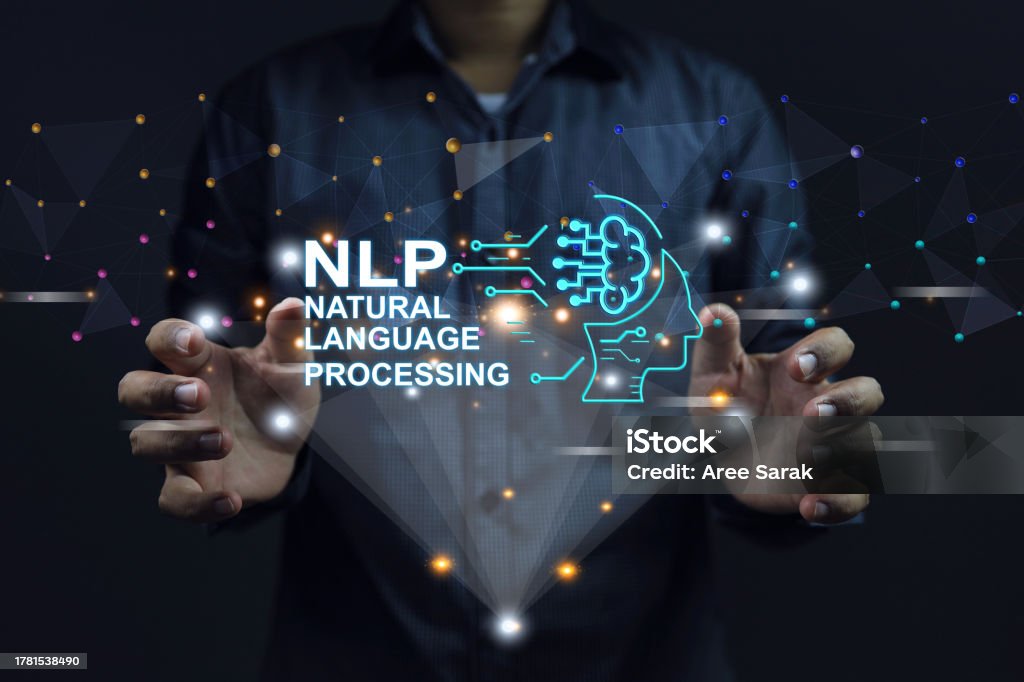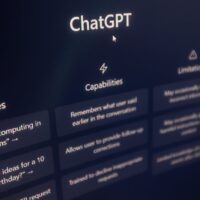Understanding RNNs, NLP, and the Latest Deep Learning Trends in 2024-2025 Introduction to Natural Language Processing (NLP) Natural Language Processing (NLP) stands at the forefront of artificial intelligence, empowering machines to comprehend and generate human language. The advent of deep learning and large language models (LLMs) such as GPT and BERT has revolutionized NLP, leading to significant advancements across various sectors. In industries like customer service and healthcare, NLP enhances chatbots and enables efficient multilingual processing, improving communication and accessibility. The integration of Recurrent Neural Networks (RNNs) with attention mechanisms has paved the way for sophisticated models like Transformers, which have become instrumental in shaping the future of NLP. Transformers, introduced in 2017, utilize attention mechanisms to process language more effectively than previous models. Their ability to handle complex language tasks has led to the development of advanced LLMs, further propelling NLP innovations. Wikipedia As NLP continues to evolve, the focus is on creating more efficient models capable of understanding and generating human language with greater accuracy. This progress holds promise for more natural and effective interactions between humans and machines, transforming various aspects of daily life. NLP has achieved deeper contextual understanding, enabling models to grasp nuances such as sarcasm, humor, and cultural references. This advancement enhances sentiment analysis, allowing businesses to better assess customer emotions and feedback. Dreamslab The integration of text, audio, and visual data has led to more sophisticated NLP systems capable of processing and generating content across multiple modalities. This development enhances applications like image captioning and video analysis, providing a more comprehensive understanding of information. Analytics Insight RNNs in NLP: A Powerful Tool for Sequential Data Recurrent Neural Networks (RNNs) are a key architecture for handling sequential data, making them highly suitable for NLP tasks. They have the ability to “remember” past inputs, which is crucial when processing sentences where the meaning of each word depends on its context. For instance, when generating text, an RNN uses previously generated words to predict the next one. Character-Level RNNs (Char-RNN) Char-RNNs are a fascinating example of how RNNs work in text generation. These models generate text one character at a time, predicting the next character based on the ones before it. A char-RNN trained on Shakespeare’s works, for instance, will generate new text that mimics Shakespeare’s style, showing how effectively RNNs can capture and reproduce the nuances of language. However, RNNs alone often struggle with long-term dependencies, which is why more advanced models like GRUs and LSTMs were introduced to handle these issues more efficiently. Source: Predibase Stateful vs. Stateless RNNs Stateless RNNs process each sequence independently, resetting their hidden states after each batch, which is effective for short sequences but struggles with long-term context. Stateful RNNs, on the other hand, retain their hidden state across batches, making them more suited for long sequences, where maintaining the context is essential for making accurate predictions. The Evolution to Attention Mechanisms and Transformers While RNNs were the cornerstone of NLP in earlier years, the introduction of attention mechanisms revolutionized the field. These mechanisms enable models to focus on the most relevant parts of an input sequence, which significantly improved performance in complex tasks like machine translation and text summarization. Transformer architectures, like BERT and GPT, further advanced the field by allowing parallel processing of input data. Transformers leverage self-attention, which enables them to consider all words in a sentence at once, making them more efficient than RNNs, which process data sequentially. Natural Language Processing (NLP) has significantly advanced, leading to a variety of innovative applications across multiple sectors: Localized Large Language Models (LLMs): There’s a growing preference for localized LLMs, such as Llama2, over centralized models like ChatGPT. This shift addresses security concerns and allows for the integration of industry-specific knowledge, enabling businesses in sectors like healthcare, finance, and law to customize AI solutions to their unique contexts. Autonomous AI Agents NLP has enabled the development of autonomous AI agents capable of managing complex tasks such as scheduling and software development. These agents interact naturally with users, enhancing productivity and efficiency. Time Multilingual and Multimodal Learning The integration of text, audio, and visual data has led to sophisticated NLP systems capable of processing and generating content across multiple modalities. This development enhances applications like image captioning and video analysis, providing a more comprehensive understanding of information. Analytics Insight Personalized User Experiences Advancements in NLP have facilitated more personalized interactions, with systems tailoring responses based on individual user preferences and histories. This personalization enhances user satisfaction in applications such as virtual assistants and customer service chatbots. Analytics Insight Explainable and Ethical AI There’s an increased focus on developing explainable AI (XAI) models that provide insights into their decision-making processes. This transparency is crucial in industries like finance and healthcare, where biased decisions can have serious consequences. Industry Wired Real-Time Language Translation NLP models now offer near-instantaneous translation across numerous languages, facilitating seamless global communication. These systems consider cultural nuances and regional expressions, providing contextually appropriate translations. SavvycomSoftware Advanced Sentiment Analysis NLP systems have become adept at detecting emotional undertones in language, allowing businesses to respond with greater empathy and improve customer experiences. This capability is particularly valuable in customer service and social media monitoring. Industry Wired Natural Language Generation (NLG) NLG has advanced to the point where systems can automatically generate reports, news articles, and other content, enhancing efficiency in fields like journalism and business intelligence. For instance, automated systems can produce textual summaries of complex data sets, aiding in decision-making processes. Wikipedia These developments underscore NLP’s expanding role in creating more intuitive, efficient, and ethical interactions between humans and machines, transforming various aspects of daily life. Implementing a Char-RNN for Text Generation — Step by Step Introduction So far in our pervious articles days like days dd to day 62 ,we have discussed a lot about Recurrent Neural Networks (RNNs). Now, we’ll bring those concepts to life by implementing a character-level RNN (char-RNN) to generate Shakespearean text. Each part of the code is tied to the key stages of RNN-based deep learning, and we’ll explain the rationale behind each choice. Step 1: Data Loading and Preprocessing (Preprocessing Stage) The first step in any deep learning model is data preparation. For RNNs, this means transforming raw text data into a form that can be processed by the network. import tensorflow as tf shakespeare_url = "https://homl.info/shakespeare" # shortcut URL filepath = tf.keras.utils.get_file("shakespeare.txt", shakespeare_url) with open(filepath) as f: shakespeare_text = f.read() Explanation and Connection to RNN Training Stages: Data Preprocessing is a crucial stage in deep learning. For RNNs, especially in NLP, this involves preparing sequential data so that each character or word is properly represented. This stage is common to all types of neural networks but particularly important for RNNs because they process data step by step over time, so every detail in the text (characters in this case) matters. Step 2: Text Vectorization (Input Encoding) Before feeding the text into the RNN, it must be transformed into numerical format. This process is known as vectorization. text_vec_layer = tf.keras.layers.TextVectorization( split="character", # character-level encoding standardize="lower" # convert to lowercase to reduce complexity ) text_vec_layer.adapt([shakespeare_text]) encoded = text_vec_layer([shakespeare_text])[0].numpy() # Convert to numpy array Explanation and Connection to RNN Training Stages: Input Encoding: The RNN needs data in numerical format, as it can’t process raw text. By vectorizing the text at the character level, we ensure that each character is represented by an integer. The TextVectorization layer converts text into a format suitable for processing by an RNN. This step is crucial for sequence models like RNNs, where each element in the sequence (character) must be properly represented so the network can learn temporal dependencies. Step 3: Preparing Data for the RNN (Training Data Setup) Now, we prepare overlapping sequences from the encoded text. These sequences are used to train the RNN to predict the next character in a sequence. encoded -= 2 # Drop tokens 0 (pad) and 1 (unknown) n_tokens = text_vec_layer.vocabulary_size() – 2 dataset_size = len(encoded) def to_dataset(sequence, length, shuffle=False, seed=None, batch_size=32): ds = tf.data.Dataset.from_tensor_slices(sequence) ds = ds.window(length + 1, shift=1, drop_remainder=True) ds = ds.flat_map(lambda window_ds: window_ds.batch(length + 1)) if shuffle: ds = ds.shuffle(buffer_size=100_000, seed=seed) ds = ds.batch(batch_size) return ds.map(lambda window: (window[:, :-1], window[:, 1:])).prefetch(1) Explanation and Connection to RNN Training Stages: Training Data Setup: RNNs are trained on sequences, and here we are generating sliding windows of input-target pairs. Each window is a sequence of characters, where the RNN learns to predict the next character in the sequence. The RNN needs sequential data because it builds an internal “memory” of the previous inputs to predict the next output. Preparing the data in this way allows the network to learn these temporal dependencies. Step 4: Splitting the Dataset (Training/Validation/Test Split) We split the dataset into training, validation, and test sets. length = 100 tf.random.set_seed(42) train_set = to_dataset(encoded[:1_000_000], length=length, shuffle=True, seed=42) valid_set = to_dataset(encoded[1_000_000:1_060_000], length=length) test_set = to_dataset(encoded[1_060_000:], length=length) Explanation and Connection to RNN Training Stages: Training/Validation/Test Split: This step ensures the model’s performance is validated and tested on unseen data. The RNN learns from the training set, while the validation set ensures it generalizes well during training. The test set is used to evaluate final performance after training. Splitting the data helps prevent overfitting, which is especially…
Natural Language Processing (NLP) and RNN – day 63




